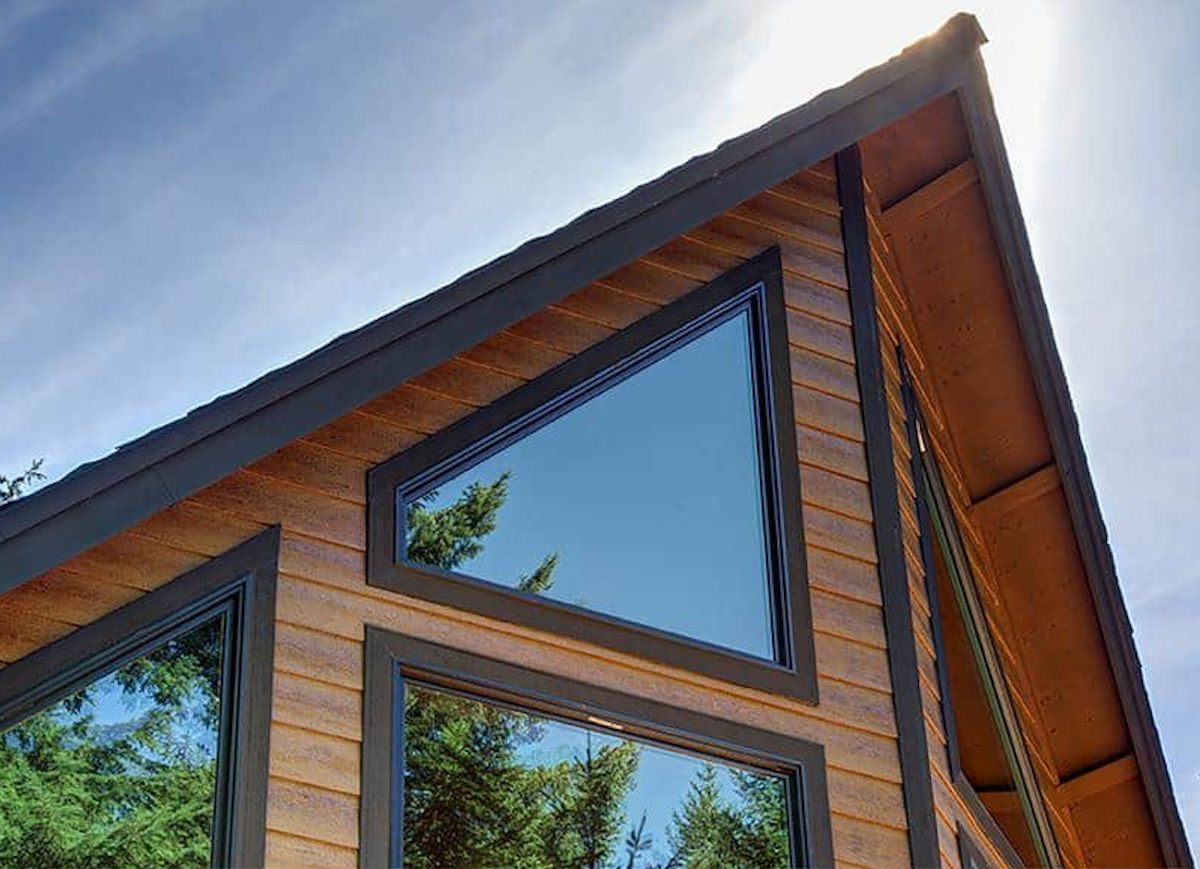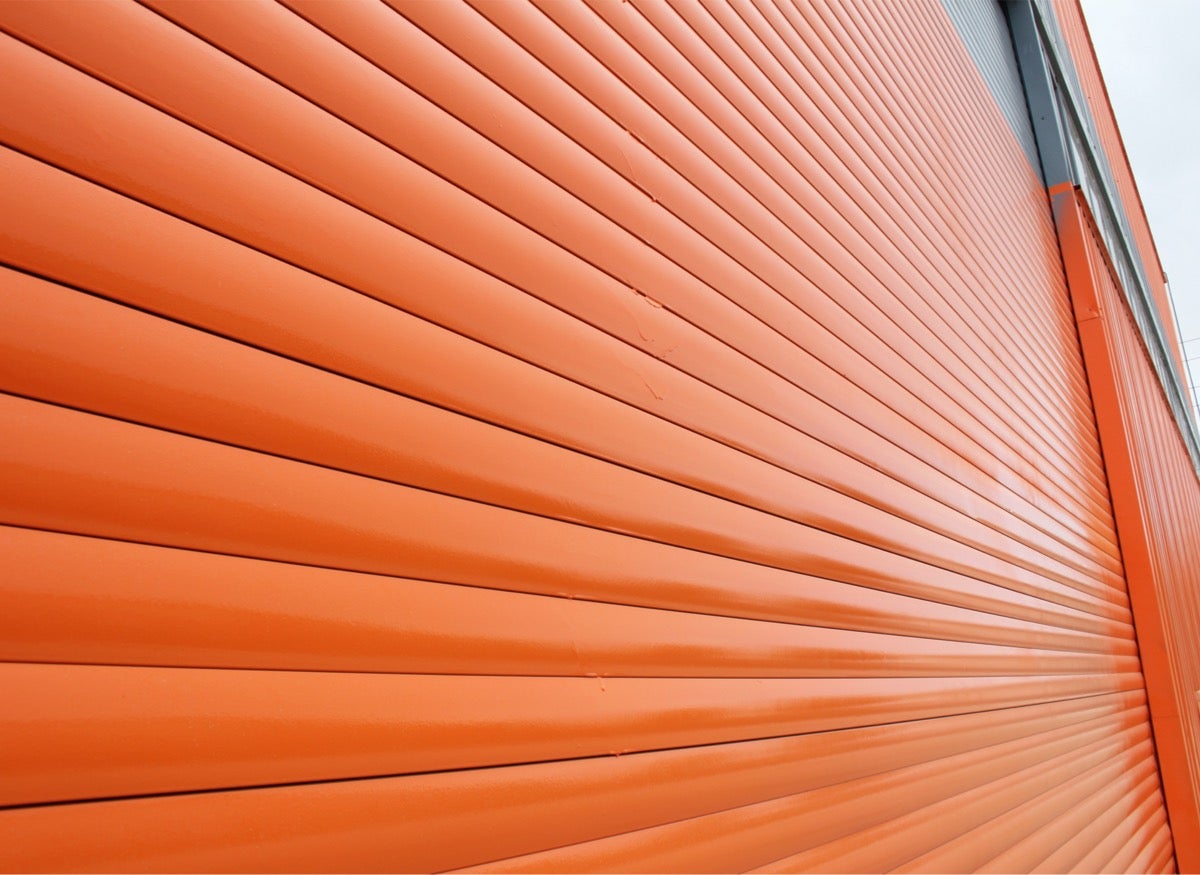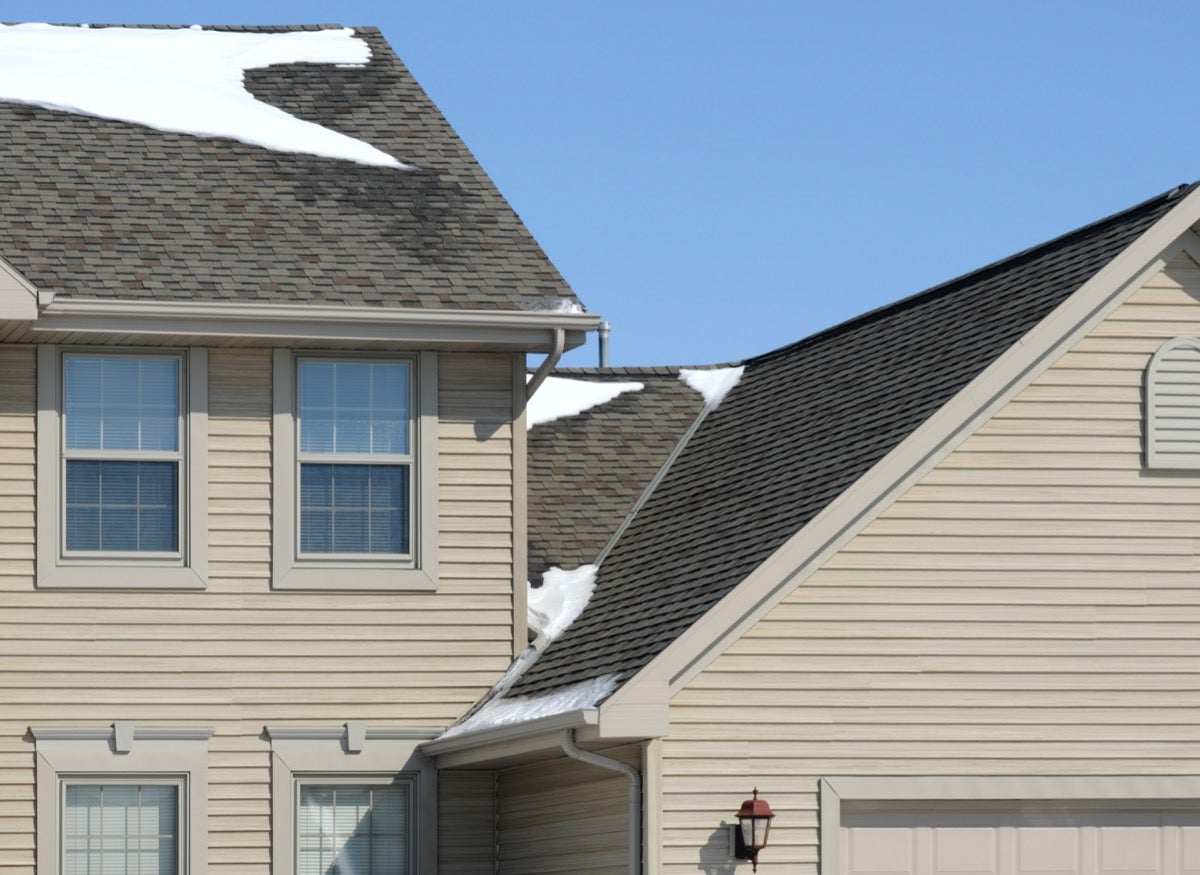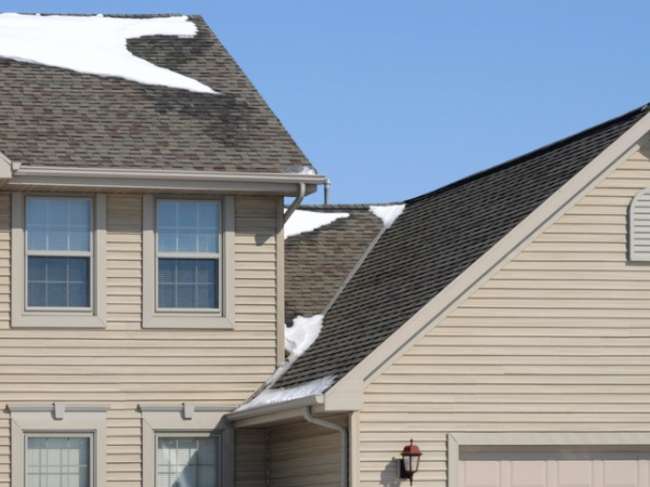We may earn revenue from the products available on this page and participate in affiliate programs. Learn More ›
Taking Sides About Siding

While a wide range of materials can effectively cover a home, there isn’t one material that is perfect for every climate, style, and budget. Before spending thousands of dollars updating your home’s exterior, it’s important to know how long different types of siding last, and how much work you’ll have to put into keeping your siding in top shape. The more familiar you are with the pros and cons of the most popular siding options, the better you’ll be able to pick the right one for your situation.
Brick

In addition to its traditional aesthetics and durability, brick masonry takes longer to be affected by outdoor temperatures when compared to wood-framed and wood-sided homes. Even when exterior walls are the same thickness, the higher thermal mass of brick takes longer to absorb heat and to radiate the heat to the interior of a home.
This means that when the seasons change and temperatures outside begin to be higher or lower, the indoor temperature doesn’t change as quickly as inside a framed and sided house. In addition to being more comfortable, homes with brick siding can save their owners some money on heating and cooling bills. Plus, the International Association of Certified Home Inspectors says brick can last more than 100 years.
Whether you choose structural brick or brick veneer, know the material will need some maintenance for the longest life possible. Check brick periodically for possible water damage and blocked weep holes to avoid structural issues. Annual cleaning with a mild detergent and water, plus repointing the mortar joints when they become damaged or every 20 or so years can extend the life of brick.
Best For: Brick homes are great for those living in colder climates, since brick retains heat longer than other materials. It’s also great for homeowners who want a low-maintenance facade, and for those who are concerned about severe weather.
Our Recommendation: Old Mill Brick Brickwebb Castle Gate Thin Brick Sheets at The Home Depot
Saving time during installation, this brick veneer comes in sheets with 12 thin kiln fired clay bricks spaced evenly and pre-fastened to a web, and ready to set into place.
Vinyl

Today’s vinyl siding is weather- and insect-proof, fade-resistant, and virtually indestructible under normal circumstances. It also remains one of the cheapest materials to install, and comes in a range of colors and designs, even wood-grain patterns.
Vinyl siding requires some maintenance, however, because mold and grime can accumulate. However, it takes just a few hours to hose off vinyl every year. With proper care, it can last about 60 years.
Best For: Vinyl siding is best for those who are on a budget but want a wide range of colors from which to choose.
Our Recommendation: Georgia-Pacific Vision Pro Dutch Lap Vinyl Siding at Lowe’s
Made in the USA, this wood grain embossed siding never needs painting and is available in white, gray, tan, and almond.
RELATED: How to Clean Vinyl Siding
Wood

Considered a high-end siding because it is fairly expensive and not so common, wood can be an environmentally friendly siding choice, depending on the species, climate, and region. While you can choose from a variety of wood siding options—pine, spruce, fir, cedar, redwood—not all may be suited to your region or climate.
Before settling on a wood species and grade, ask your builder about rot resistance, splitting, checking, and cupping. Proper maintenance includes power-washing, staining, and sealing the material whenever the heat of the sun fades the finish or moisture leads to mold or mildew. However, some like the look of weathered wood siding.
Best For: Wood siding can be best for those who want a traditional seaside look, and for owners who don’t mind frequent maintenance.
Our Recommendation: Plytanium Natural/Rough Sawn Syp Plywood Lap Siding at Lowe’s
This exterior-grade Southern pine wood siding panel has a rough-sawn texture and is made from SFI-certified wood sources.
RELATED: Types of Wood Siding: Your Guide to 5 Popular Home Cladding Options
Engineered Wood

If you love the classic look of wood siding but don’t want to deal with the upkeep, then engineered wood may be a good choice for you. Both cheaper and easier to install, engineered wood is an alternative to high-maintenance natural wood. Wood fibers are bound by resin and then pressed together, so the material better resists infestations and is more durable than wood.
Available in a variety of colors and textures, the siding is as easy to install as wood and can last 100 years if well maintained with annual cleaning, paint touch-ups, and sealant repairs. A wax coating applied during the manufacturing process helps resist moisture, but the material is known for being prone to moisture issues.
Best For: Homeowners who want the look of wood at a budget-friendly price and desire lower maintenance siding may find engineered wood siding a perfect fit.
Our Recommendation: LP SmartSide 440 Series Cedar Texture Engineered Wood Siding at The Home Depot
This engineered wood siding has the look of cedar and is treated for resistance to termites and rot. SmartSide is available in a variety of thicknesses and widths.
Stucco

Stucco, which can last 50 to 80 years, has evolved from the standard white-washed model to a full range of textures and colors. Its breathability allows moisture to evaporate quickly, making it ideal for locations with normal precipitation, but poorly suited to rainy areas. It’s usually applied over masonry or concrete, but can be applied over wood if metal netting is used.
While materials are not pricey, labor costs definitely can add up because stucco requires applying three coats and it can be tough finding a stucco craftsperson for repairs.
Best For: Homeowners who want to finish a masonry home in a Southwestern style or those in drier climates may be drawn to stucco.
Our Recommendation: Quikrete Quikwall Surface Bonding Stucco Mix at Lowe’s
The Quickwall stucco mix has fiberglass reinforced bonding Portland cement designed for block walls. Color can be added to the mix, which eliminates the need for painting.
RELATED: The Best Exterior Paints for Stucco
Stone Veneer

Made from a mixture of Portland cement, lightweight aggregate, and iron-oxide pigments, manufactured stone veneer products have become a popular siding option. While the look can be a dead ringer for structural stone, the cost of installation is considerably less than natural stone, and it can last about a century, the product does not offer the same durability as the real deal.
Best For: Stone veneer can be a great choice for those who want the look of stone at a more affordable price.
Our Recommendation: ADORN Colorado Gray Stone Veneer Siding at The Home Depot
The mortarless gray stone veneer offers the look and durability of stacked stone but with much easier installation and a lower price.
Fiber Cement

Fiber-cement siding—typically made from Portland cement, sand, and cellulose fibers—is impervious to wood-boring insects, rot, and deterioration from salt and ultraviolet rays. It also carries a 1A fire rating, is specified in areas prone to hurricanes and tornadoes, and is available in a full range of wood-like lap and shingle styles and colors.
While it’s not recyclable, fiber cement does break down much faster and with less environmental impact than vinyl siding. After about 15 years, refinishing becomes necessary, but maintenance duties are otherwise light for the product’s 100-year expected lifetime.
Best For: Regions prone to damaging winds or fires, and homeowners who want the look of wood without the upkeep requirements can benefit from fiber-cement siding.
Our Recommendation: GAF WeatherSide Purity Wavy Fiber-Cement Siding at The Home Depot
The pre-primed shingle siding has a wavy edge and textured surface, and it is resistant to termites, warping, denting, and rotting.
RELATED: Fiber Cement Siding 101: What to Know About Cost, Maintenance, and More
Aluminum

Aluminum siding had long been popular with coastal homeowners for its rust resistance, and its affordability and low maintenance made it a practical option for homes around the country. Aluminum is a soft metal, however, and is prone to dents and dings, which makes repairing and replacing this type of siding a not-so-uncommon project. Since other siding options have become more popular, aluminum is no longer a top choice for most homeowners and can be difficult to find.
Thicker aluminum siding tends to be more expensive, but it also can resist dents and last longer than the standard 44-gauge siding. Known for lasting 25 to 40 years or more, over time it can lose its original luster, but nothing that a fresh coat of paint can’t handle.
Best For: Homes in moist environments and those who are repairing homes with existing aluminum siding.
Our Recommendation: Mastic Envoy Aluminum Siding on Beacon, price available upon request
A member of the U.S. Green Building Council, Mastic offers this Energy Star and GreenCircle Certified 8-inch-wide aluminum siding that’s 100 percent recyclable.
RELATED: How To: Paint Aluminum Siding
Corrugated Metal

Corrugated metal is a popular roofing material, but also can be a durable and weather-resistant siding choice. With the pattern or ridges running vertically, standing seam is the metal siding and roofing that is often thought of first. However, corrugated metal siding is easier to install with edges overlapping and exposed fasteners.
While it’s more expensive than many types of siding, corrugated metal also is less expensive than other types of metal siding and roofing. Other benefits are that it is durable, 100-percent recyclable, and can last about 40 years or more. Plus, cleaning it just involves an easy rinse with water.
Best For: Homeowners who like the look of metal, enjoy low-maintenance building products, and don’t have a tight budget may be best suited to choosing corrugated metal siding.
Our Recommendation:
Gibraltar Corrugated Galvanized Steel Panel at The Home Depot
The 31-gauge steel corrugated panels may be thin, but they securely cover a home’s facade. Made for both roofing and siding, the panels are lightweight and unpainted.
Insulated Vinyl Siding

While offering the same look as vinyl siding, insulated vinyl siding increases a home’s thermal performance and the price tag of siding a home. Typically insulated with expanded polystyrene, the insulation can be more than an inch thick. Its increased thickness over vinyl siding makes it feel more solid and less flexible.
Insulated vinyl siding can help improve a home’s energy use by reducing thermal bridging and increasing air tightness, but the resulting energy bill difference in mild climates isn’t as noticeable as in harsher climates. It also needs at least annual rinsing with soapy water.
Best For: Insulated vinyl siding is best for homes with more extreme climates and for homeowners with healthy budgets.
Our Recommendation: CertainTeed CedarBoards Insulated Vinyl Siding at Modern Builders Supply
The insulated vinyl siding has a cedar wood texture and foam backing that reduces noise and increases thermal performance of a home.

Save Energy While Staying Cozy
Today’s energy-efficient space heaters warm individual rooms, so users needn’t heat unoccupied areas of the house. We tested the most popular space heaters on the market to find out which ones performed the best.

